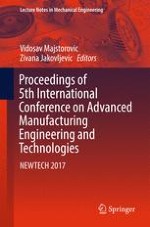2017 | OriginalPaper | Chapter
Mechanistic Approach for the Evaluation of Machine Tools Quasi-Static Capability
Authors : Károly Szipka, Theodoros Laspas, Andreas Archenti
Published in: Proceedings of 5th International Conference on Advanced Manufacturing Engineering and Technologies
Publisher: Springer International Publishing
Activate our intelligent search to find suitable subject content or patents.
Select sections of text to find matching patents with Artificial Intelligence. powered by
Select sections of text to find additional relevant content using AI-assisted search. powered by
